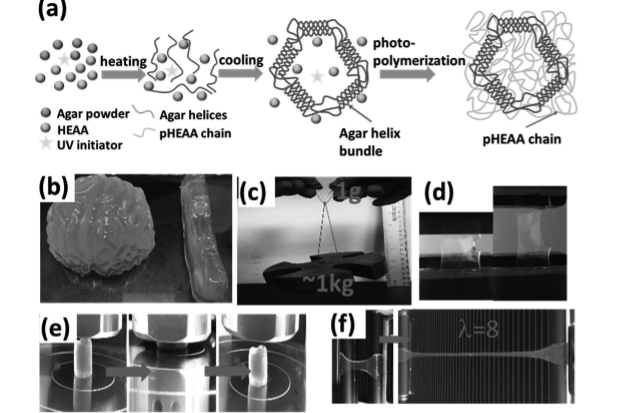ABSTRACT:Conventional design wisdom prevents both bulk and interfacial toughness to be presented in the same hydrogel, because the bulk properties of hydrogels are usually different from the interfacial properties of the same hydrogels on solid surfaces. Here, a fully‐physically‐linked agar (the first network)/poly(N‐hydroxyethyl acrylamide) (pHEAA, the second network), where both networks are physically crosslinked via hydrogen bonds, is designed and synthesized. Bulk agar/pHEAA hydrogels exhibit high mechanical properties (2.6 MPa tensile stress, 8.0 tensile strain, 8000 J m−2 tearing energy, 1.62 MJ m−3 energy dissipation), high self‐recovery without any external stimuli (62%/30% toughness/stiffness recovery), and self‐healing property. More impressively, without any surface modification, agar/pHEAA hydrogels can be easily and physically anchored onto different nonporous solid substrates of glass, titanium, aluminum, and ceramics to produce superadhesive hydrogel–solid interfaces (i.e., high interfacial toughness of 2000–7000 J m−2). Comparison of as‐prepared and swollen gels in water and hydrogen‐bond‐breaking solvents reveals that strong bulk toughness provides a structural basis for strong interfacial toughness, and both high toughness mainly stem from cooperative hydrogen bonds between and within two networks and between two networks and solid substrates. This work demonstrates a new gel system to achieve superhigh bulk and interfacial toughness on nonporous solid surfaces
